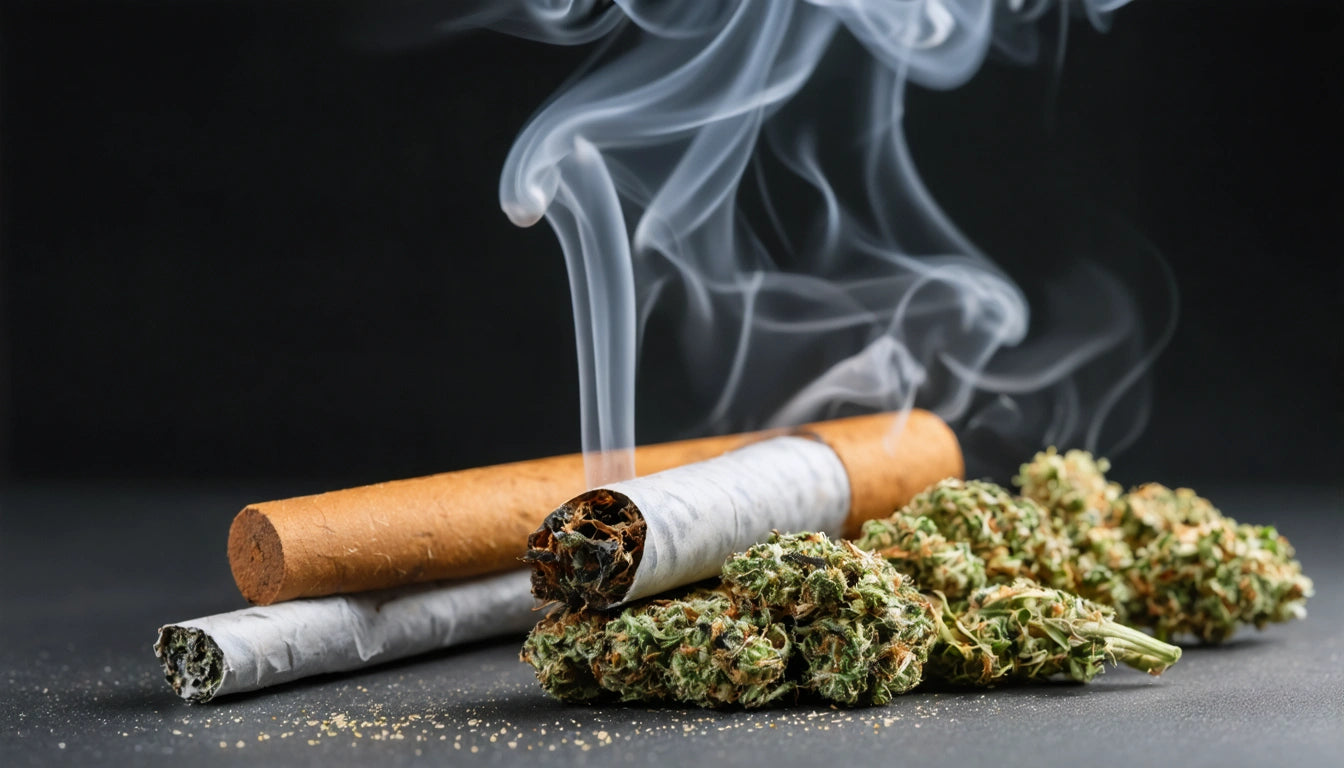Table of Contents
Comprehensive Guide to Caring for Cannabis Plants
Successfully growing cannabis requires attention to detail and consistent care throughout the plant's life cycle. Whether you're a beginner wondering how to care for cannabis seedlings or an experienced grower looking to refine your techniques, this guide covers the essential aspects of cannabis plant care from germination to harvest.
Cannabis Seedling Care: Starting Strong
Learning how to care for a cannabis plant begins with proper seedling management. Seedlings require gentle handling and specific conditions to develop strong root systems and healthy growth patterns.
Germination Process
Start by germinating seeds in a damp paper towel or directly in a light growing medium. Maintain temperatures between 70-85 °F (21-29 °C) with high humidity (around 70%). Once sprouted, transfer to small containers with well-draining soil.
For detailed guidance on the early stages, our guide to planting and caring for weed seedlings provides step-by-step instructions for this critical phase.
Early Growth Requirements
During the first few weeks, seedlings need:
- 18-24 hours of light daily (using low-intensity grow lights)
- Light watering to prevent drowning the delicate roots
- Protection from strong drafts and temperature fluctuations
- Minimal nutrients until the first true leaves develop
Watering Techniques for Healthy Cannabis Plants
Understanding how to take care of weed plants includes mastering proper watering techniques. Overwatering is one of the most common mistakes among new growers.
Watering Schedule
Rather than following a strict calendar, water when the top inch of soil feels dry to the touch. Cannabis plants prefer a cycle of wet and dry periods, which encourages root growth and oxygen absorption.
Water Quality and pH
Cannabis thrives in water with a pH between 6.0-6.5 for soil and 5.5-6.0 for hydroponic systems. Always allow chlorinated tap water to sit for 24 hours before using, or consider filtered water for optimal results.
Lighting Requirements Throughout Growth Stages
Light is the plant's energy source and triggers different growth phases. Understanding lighting needs is essential when learning how to take care of a cannabis plant.
Vegetative Stage Lighting
During vegetative growth, provide 18-24 hours of light daily. This encourages strong stem development and lush foliage. Position lights to ensure even coverage without light burn (typically 12-24 inches away, depending on light intensity).
Flowering Stage Adjustments
To trigger flowering, switch to a 12/12 light/dark cycle. This mimics the natural seasonal change that signals the plant to produce buds. Ensure the dark period is completely uninterrupted to prevent stress and potential hermaphroditism.
For a complete timeline from seed to harvest, our ultimate guide to growing cannabis at home offers valuable insights for each growth stage.
Nutrient Management for Optimal Growth
Cannabis has specific nutritional needs that change throughout its life cycle. Learning how to care for pot plants includes understanding these shifting requirements.
Macronutrients (NPK)
Cannabis requires different ratios of nitrogen (N), phosphorus (P), and potassium (K) depending on growth stage:
- Vegetative stage: Higher nitrogen (N) for leaf and stem growth
- Flowering stage: Higher phosphorus (P) and potassium (K) for bud development
Micronutrients and Supplements
Beyond NPK, cannabis benefits from calcium, magnesium, sulfur, and trace elements. Many growers also use supplements like silica, humic acid, and beneficial bacteria to enhance plant health and resilience.
When using pre-rolled cones for your harvested flower, consider custom options that preserve terpenes and potency while providing a consistent experience for personal use or sharing with friends.
Pest and Disease Control
Preventing and addressing pest issues is crucial when learning how to care for marijuanas plants. Regular inspection is your first line of defense.
Common Cannabis Pests
Watch for spider mites, aphids, fungus gnats, and thrips. These can quickly multiply and damage plants. Introduce beneficial insects like ladybugs or predatory mites as natural controls, or use organic insecticidal soaps for minor infestations.
Disease Prevention
Maintain proper airflow and humidity levels to prevent powdery mildew, botrytis (bud rot), and root diseases. Avoid overhead watering and remove any affected plant material immediately to prevent spread.
Harvesting and Curing Best Practices
Knowing when and how to harvest is the culmination of learning how to take care mum plants (mother plants) and their flowering offspring.
Harvest Timing
Monitor trichome development using a jeweler's loupe or digital microscope. Clear trichomes indicate immaturity, cloudy trichomes signal peak THC, and amber trichomes suggest higher CBD and more sedative effects.
Proper Curing Process
After harvesting and trimming, slow-dry the buds in a dark room at 60-70 °F (15-21 °C) with 45-55% humidity for 7-10 days. Then transfer to airtight containers, opening daily for the first week to release moisture and gradually less frequently over 2-4 weeks.
For detailed curing instructions, our ultimate guide to properly curing cannabis covers everything from drying rooms to long-term storage solutions.
Long-Term Success Strategies for Cannabis Cultivation
Mastering how to care for a weed plant is an ongoing learning process. Experienced growers continue to refine their techniques with each cycle.
Record Keeping
Maintain detailed logs of feeding schedules, environmental conditions, and plant responses. This information becomes invaluable for troubleshooting issues and improving future grows.
Sustainable Practices
Implement water recycling, organic nutrients, and beneficial insect populations to create a sustainable growing environment. Consider creative ways to utilize leftover cannabis leaves and stems to minimize waste.
For those who need to terminate plants due to male identification or other issues, learning how to kill cannabis plants properly is important. Remove them from your growing area, dispose of them securely (composting for personal grows or following local regulations for commercial operations), and thoroughly clean the area to prevent pollen contamination or pest transfer.
With consistent attention to these core principles, you'll develop the knowledge and skills needed for successful cannabis cultivation. Remember that plant care is both a science and an art that improves with experience and observation.











Leave a comment
All comments are moderated before being published.
This site is protected by hCaptcha and the hCaptcha Privacy Policy and Terms of Service apply.